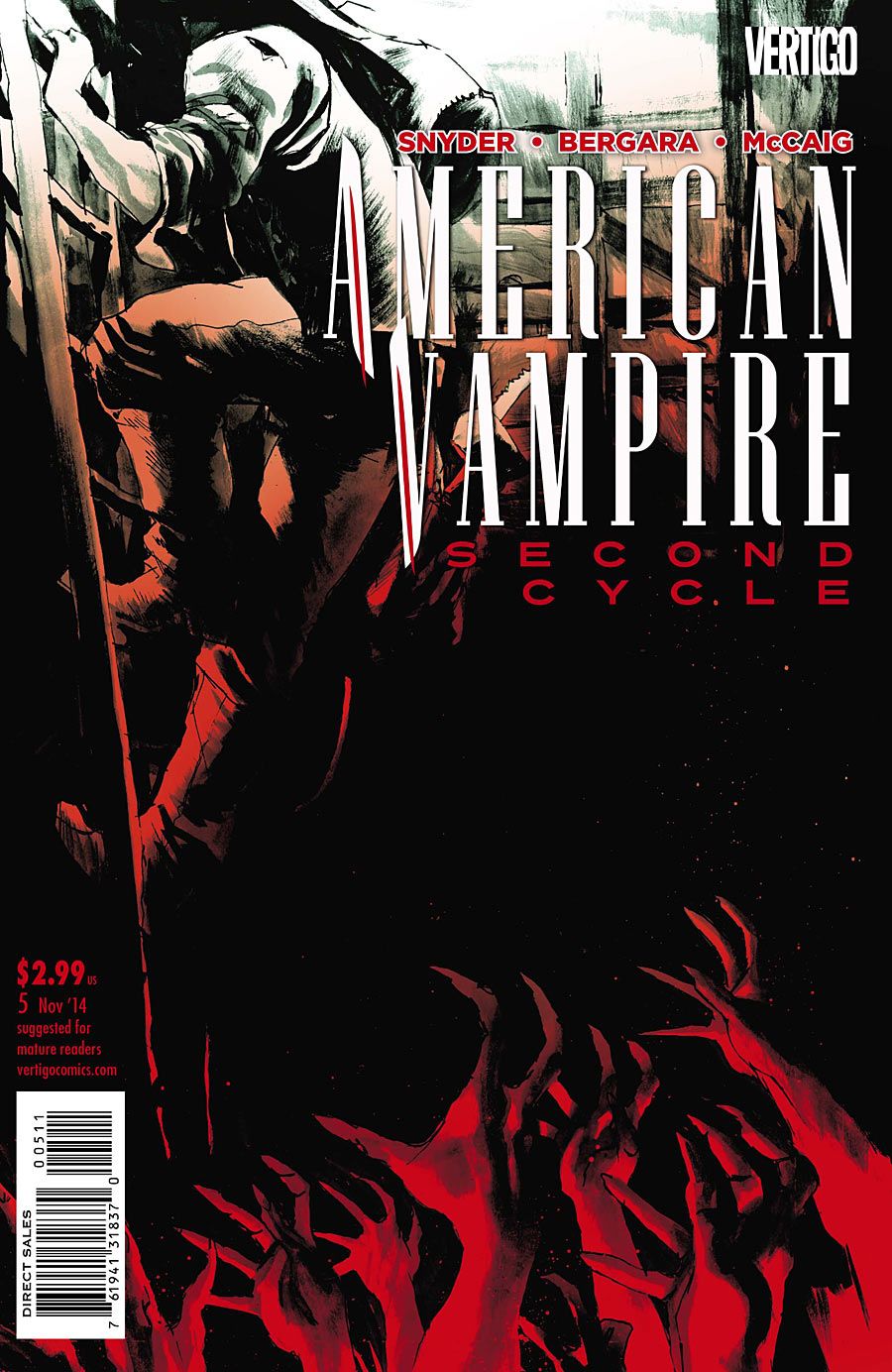"American Vampire: Second Cycle" #5 heads back in time to the Gold Rush and the Wild West in a one-shot called "The Miner's Journal." This part-prose, part-comic issue is an effective exercise in suspense for Scott Snyder and a showstopper for guest artist Matias Bergara. Though the story links into the mystery of the Gray Trader, readers will need no background to understand it. It's therefore a great test issue for readers who think they might want to check out "American Vampire."
Scott Snyder flips adeptly between prose and panels, which is no easy feat. It doesn't feel as if he's favoring either format, even though the prose journals give the reader so much more of the miner Seb's interiority than the panels and captions do for Gene Bunting in the present. Part of this is that the reader knows something bad has happened to Seb; there's little mystery about whether he'll make it, while Gene's fate is much less certain.
The other part of Snyder's success is structure. The issue is parceled out so cleanly, from the timing of the jumps between past and present to the pacing of Gene's discoveries. Once I read the ending, it was remarkably easy to trace the story's journey from first page to last. I'm more often a dialogue and character reader, but "The Miner's Journal" was a stellar reminder of what a strong structure can do for a one-shot.
Though the dark, horrifying scenes in the mineshaft are quite well done, Matias Bergara and Dave McCaig really excel in capturing the dusty landscapes of the Nevada Desert. McCaig takes the limited palette of the arid Southwest -- tan, light tan and lighter tan -- and imbues it with harsh variety. Even his blue skies look sun-bleached and shifting.
Bergara also puts his flexibility to work. When he wants to emphasize the smallness of the protagonist, he drops the details that he includes in the horror scenes for a lighter approach that makes Gene look wispy and insignificant. His layouts are also designed to make the reader feel the bigness and emptiness of this place. He often lays the panels containing the actual action over full-page depictions of the desert. Rather than spacing the panels out to make the page feel busier and more clustered, Bergara forces them to the high or low center of the page, letting the expanse of desert overwhelm the reader's eye. One page is even constructed of only 6 small panels on a stark white background. As a result, the setting looks dead long before any of the actual undead show up.
Though the journal pages look beautiful and period appropriate, I do wish letterer Steve Wands had gone a touch darker on the journal's font, as it could be tricky to make out the letters. Either the light color or the cramped font would have been fine on their own, but together they are occasionally obscuring.
Meticulously structured and beautifully drawn, "American Vampire: Second Cycle" #5 is a testament to just how scary and memorable one-shots can be.

